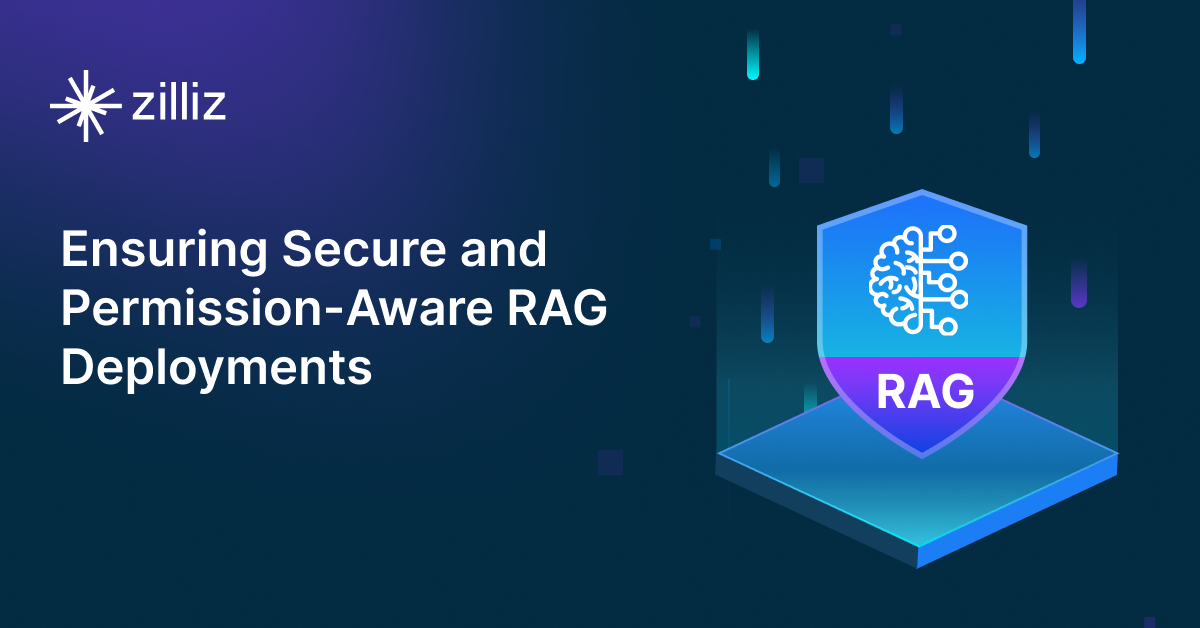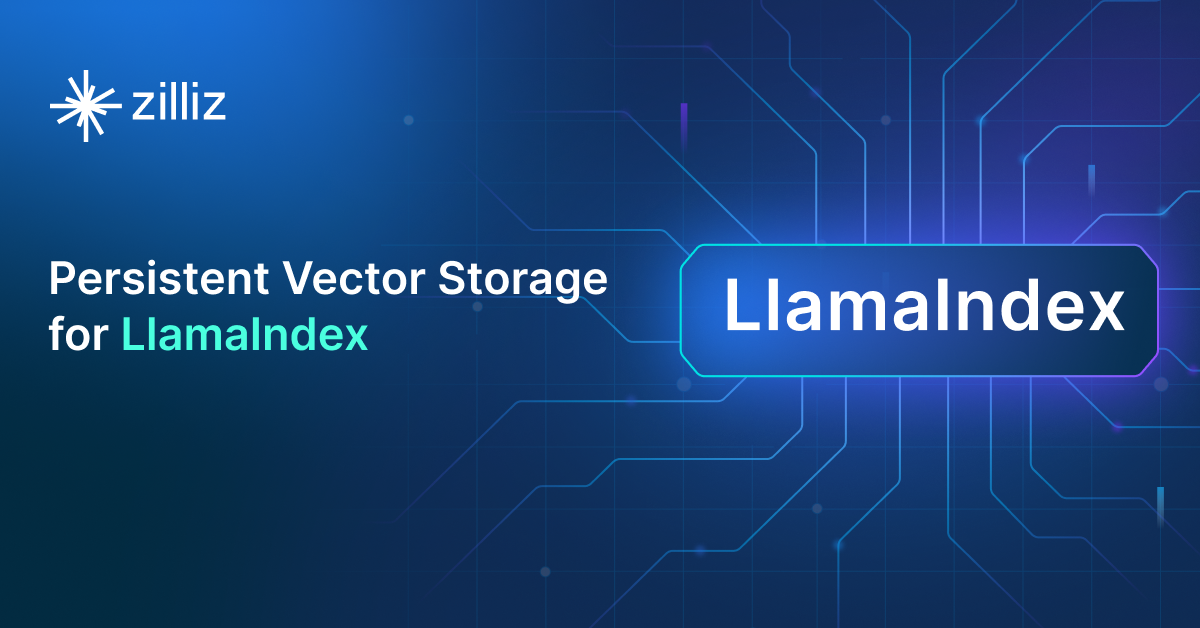Build RAG Chatbot with LangChain, Milvus, AWS Bedrock Claude 3.7 Sonnet, and voyage-code-2
Introduction to RAG
Retrieval-Augmented Generation (RAG) is a game-changer for GenAI applications, especially in conversational AI. It combines the power of pre-trained large language models (LLMs) like OpenAI’s GPT with external knowledge sources stored in vector databases such as Milvus and Zilliz Cloud, allowing for more accurate, contextually relevant, and up-to-date response generation. A RAG pipeline usually consists of four basic components: a vector database, an embedding model, an LLM, and a framework.
Key Components We'll Use for This RAG Chatbot
This tutorial shows you how to build a simple RAG chatbot in Python using the following components:
- LangChain: An open-source framework that helps you orchestrate the interaction between LLMs, vector stores, embedding models, etc, making it easier to integrate a RAG pipeline.
- Milvus: An open-source vector database optimized to store, index, and search large-scale vector embeddings efficiently, perfect for use cases like RAG, semantic search, and recommender systems. If you hate to manage your own infrastructure, we recommend using Zilliz Cloud, which is a fully managed vector database service built on Milvus and offers a free tier supporting up to 1 million vectors.
- AWS Bedrock Claude 3.7 Sonnet: AWS Bedrock Claude 3.7 Sonnet: Built on Anthropic's Claude 3.7 Sonnet, AWS Bedrock integrates Claude's capabilities into AWS services, enabling seamless AI model deployment across industries. It offers scalable, high-performance natural language processing for enterprises, enhancing tasks like content creation, chatbots, and language-based AI solutions while leveraging AWS’s cloud infrastructure for ease of integration and scalability.
- Voyage Code 2: This AI model specializes in code generation and programming assistance, designed to enhance developer productivity. It offers robust support in writing, debugging, and optimizing code across various languages. Ideal for software development projects, it streamlines coding workflows and facilitates rapid prototyping and learning for both novice and experienced programmers.
By the end of this tutorial, you’ll have a functional chatbot capable of answering questions based on a custom knowledge base.
Note: Since we may use proprietary models in our tutorials, make sure you have the required API key beforehand.
Step 1: Install and Set Up LangChain
%pip install --quiet --upgrade langchain-text-splitters langchain-community langgraph
Step 2: Install and Set Up AWS Bedrock Claude 3.7 Sonnet
pip install -qU "langchain[aws]"
# Ensure your AWS credentials are configured
from langchain.chat_models import init_chat_model
llm = init_chat_model("anthropic.claude-3-7-sonnet-20250219-v1:0", model_provider="bedrock_converse")
Step 3: Install and Set Up voyage-code-2
pip install -qU langchain-voyageai
import getpass
import os
if not os.environ.get("VOYAGE_API_KEY"):
os.environ["VOYAGE_API_KEY"] = getpass.getpass("Enter API key for Voyage AI: ")
from langchain-voyageai import VoyageAIEmbeddings
embeddings = VoyageAIEmbeddings(model="voyage-code-2")
Step 4: Install and Set Up Milvus
pip install -qU langchain-milvus
from langchain_milvus import Milvus
vector_store = Milvus(embedding_function=embeddings)
Step 5: Build a RAG Chatbot
Now that you’ve set up all components, let’s start to build a simple chatbot. We’ll use the Milvus introduction doc as a private knowledge base. You can replace it with your own dataset to customize your RAG chatbot.
import bs4
from langchain import hub
from langchain_community.document_loaders import WebBaseLoader
from langchain_core.documents import Document
from langchain_text_splitters import RecursiveCharacterTextSplitter
from langgraph.graph import START, StateGraph
from typing_extensions import List, TypedDict
# Load and chunk contents of the blog
loader = WebBaseLoader(
web_paths=("https://milvus.io/docs/overview.md",),
bs_kwargs=dict(
parse_only=bs4.SoupStrainer(
class_=("doc-style doc-post-content")
)
),
)
docs = loader.load()
text_splitter = RecursiveCharacterTextSplitter(chunk_size=1000, chunk_overlap=200)
all_splits = text_splitter.split_documents(docs)
# Index chunks
_ = vector_store.add_documents(documents=all_splits)
# Define prompt for question-answering
prompt = hub.pull("rlm/rag-prompt")
# Define state for application
class State(TypedDict):
question: str
context: List[Document]
answer: str
# Define application steps
def retrieve(state: State):
retrieved_docs = vector_store.similarity_search(state["question"])
return {"context": retrieved_docs}
def generate(state: State):
docs_content = "\n\n".join(doc.page_content for doc in state["context"])
messages = prompt.invoke({"question": state["question"], "context": docs_content})
response = llm.invoke(messages)
return {"answer": response.content}
# Compile application and test
graph_builder = StateGraph(State).add_sequence([retrieve, generate])
graph_builder.add_edge(START, "retrieve")
graph = graph_builder.compile()
Test the Chatbot
Yeah! You've built your own chatbot. Let's ask the chatbot a question.
response = graph.invoke({"question": "What data types does Milvus support?"})
print(response["answer"])
Example Output
Milvus supports various data types including sparse vectors, binary vectors, JSON, and arrays. Additionally, it handles common numerical and character types, making it versatile for different data modeling needs. This allows users to manage unstructured or multi-modal data efficiently.
Optimization Tips
As you build your RAG system, optimization is key to ensuring peak performance and efficiency. While setting up the components is an essential first step, fine-tuning each one will help you create a solution that works even better and scales seamlessly. In this section, we’ll share some practical tips for optimizing all these components, giving you the edge to build smarter, faster, and more responsive RAG applications.
LangChain optimization tips
To optimize LangChain, focus on minimizing redundant operations in your workflow by structuring your chains and agents efficiently. Use caching to avoid repeated computations, speeding up your system, and experiment with modular design to ensure that components like models or databases can be easily swapped out. This will provide both flexibility and efficiency, allowing you to quickly scale your system without unnecessary delays or complications.
Milvus optimization tips
Milvus serves as a highly efficient vector database, critical for retrieval tasks in a RAG system. To optimize its performance, ensure that indexes are properly built to balance speed and accuracy; consider utilizing HNSW (Hierarchical Navigable Small World) for efficient nearest neighbor search where response time is crucial. Partitioning data based on usage patterns can enhance query performance and reduce load times, enabling better scalability. Regularly monitor and adjust cache settings based on query frequency to avoid latency during data retrieval. Employ batch processing for vector insertions, which can minimize database lock contention and enhance overall throughput. Additionally, fine-tune the model parameters by experimenting with the dimensionality of the vectors; higher dimensions can improve retrieval accuracy but may increase search time, necessitating a balance tailored to your specific use case and hardware infrastructure.
AWS Bedrock Claude 3.7 Sonnet Optimization Tips
When integrating AWS Bedrock Claude 3.7 Sonnet in a RAG setup, optimize the retrieval pipeline by leveraging AWS’s scalable infrastructure for high-performance searches. Index documents based on relevance to ensure fast and accurate retrievals, and consider using AWS services like Lambda for dynamic scaling. Fine-tune Claude 3.7 Sonnet on specific industry or application data to enhance contextual relevance. Minimize costs and latency by adjusting the batch sizes for queries and optimizing the use of cloud-based storage solutions. Ensure that model hyperparameters, such as temperature and beam width, are fine-tuned to maintain both creativity and accuracy in generated responses.
voyage-code-2 optimization tips
voyage-code-2 provides solid performance for code-related RAG tasks but requires careful retrieval optimization to ensure efficient and accurate results. Use structured embeddings to improve code snippet search and retrieval precision. Format prompts with clear structure, including specific instructions, function signatures, and constraints, to enhance output quality. Keep temperature low (0.1–0.2) for accuracy in deterministic tasks while allowing slight variation for exploratory coding tasks. Enable caching for frequently requested programming patterns to optimize efficiency. Use parallelized execution and request batching to handle large-scale queries effectively. In multi-model deployments, assign voyage-code-2 to standard code completion tasks while leveraging more advanced models for deeper analysis and architectural recommendations.
By implementing these tips across your components, you'll be able to enhance the performance and functionality of your RAG system, ensuring it’s optimized for both speed and accuracy. Keep testing, iterating, and refining your setup to stay ahead in the ever-evolving world of AI development.
RAG Cost Calculator: A Free Tool to Calculate Your Cost in Seconds
Estimating the cost of a Retrieval-Augmented Generation (RAG) pipeline involves analyzing expenses across vector storage, compute resources, and API usage. Key cost drivers include vector database queries, embedding generation, and LLM inference.
RAG Cost Calculator is a free tool that quickly estimates the cost of building a RAG pipeline, including chunking, embedding, vector storage/search, and LLM generation. It also helps you identify cost-saving opportunities and achieve up to 10x cost reduction on vector databases with the serverless option.
 Calculate your RAG cost
Calculate your RAG cost
What Have You Learned?
By diving into this tutorial, you’ve unlocked the magic of building a RAG system from the ground up! You’ve seen how LangChain acts as the glue, orchestrating workflows and connecting components seamlessly. It’s like the conductor of an orchestra, ensuring every part plays in harmony. Milvus, your high-performance vector database, stepped in as the memory powerhouse, storing and retrieving embeddings at lightning speed. You learned how voyage-code-2’s embedding model transforms messy text into rich numerical representations, giving your system the “eyes” to understand context. And then there’s AWS Bedrock’s Claude 3 Sonnet, the creative genius that takes those retrieved snippets and crafts human-like responses—proving that AI can be both smart and intuitive. Together, these tools form a pipeline that doesn’t just answer questions but understands them, bridging the gap between raw data and meaningful interactions.
But wait, there’s more! You also picked up pro tips for optimizing performance, like tweaking chunk sizes and adjusting similarity thresholds, to make your RAG system faster and smarter. And let’s not forget the free RAG cost calculator—a game-changer for budgeting your projects without surprises. This isn’t just about building a tool; it’s about empowering you to innovate. Imagine the possibilities: chatbots that feel alive, search engines that read your mind, or knowledge bases that learn as they grow. You’ve got the blueprint—now it’s time to run with it. Start experimenting, tweak fearlessly, and watch your ideas take shape. The future of intelligent apps is in your hands, and you’re ready to build it. Let’s go! 🚀
Further Resources
🌟 In addition to this RAG tutorial, unleash your full potential with these incredible resources to level up your RAG skills.
- How to Build a Multimodal RAG | Documentation
- How to Enhance the Performance of Your RAG Pipeline
- Graph RAG with Milvus | Documentation
- How to Evaluate RAG Applications - Zilliz Learn
- Generative AI Resource Hub | Zilliz
We'd Love to Hear What You Think!
We’d love to hear your thoughts! 🌟 Leave your questions or comments below or join our vibrant Milvus Discord community to share your experiences, ask questions, or connect with thousands of AI enthusiasts. Your journey matters to us!
If you like this tutorial, show your support by giving our Milvus GitHub repo a star ⭐—it means the world to us and inspires us to keep creating! 💖
- Introduction to RAG
- Key Components We'll Use for This RAG Chatbot
- Step 1: Install and Set Up LangChain
- Step 2: Install and Set Up AWS Bedrock Claude 3.7 Sonnet
- Step 3: Install and Set Up voyage-code-2
- Step 4: Install and Set Up Milvus
- Step 5: Build a RAG Chatbot
- Optimization Tips
- RAG Cost Calculator: A Free Tool to Calculate Your Cost in Seconds
- What Have You Learned?
- Further Resources
- We'd Love to Hear What You Think!
Content
Vector Database at Scale
Zilliz Cloud is a fully-managed vector database built for scale, perfect for your RAG apps.
Try Zilliz Cloud for Free


